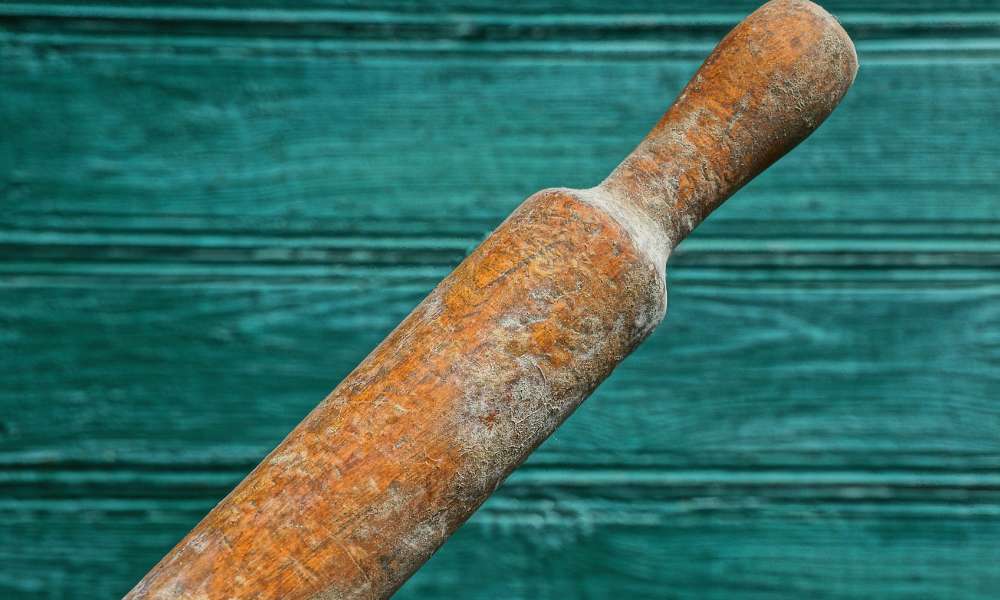Cleaning an old wooden rolling pin can bring a cherished kitchen tool back to life, restoring its charm and usability. Over time, wooden rolling pins accumulate layers of flour, oils, and even occasional stains, making thorough cleaning essential. With the right care, these wooden essentials can serve your baking needs for years, transforming dough with precision and ease. This guide will walk you through effective, gentle methods to clean an old wooden rolling pin, removing grime while preserving the wood’s natural beauty.
Understanding Your Wooden Rolling Pin
Wooden rotary pins vary in style, material, and build, each suited for different baking needs.
Types of Wooden Rolling Pins
- French rolling pins are tapered and smooth, ideal for evenly distributed pressure, perfect for pie crusts and pastry dough.
- Tapered rolling pins offer superior control with a gradual narrowing toward the ends, popular among pastry chefs.
- Traditional cylindrical pins with handles allow for a more straightforward, steady roll.
Common Materials Used
Rolling pins are commonly crafted from maple, beech, or walnut wood. Each wood type has unique characteristics—maple’s density, beech’s fine grain, or walnut’s dark elegance—making the rotary pin both a functional tool and a work of art.
Signs of Wear and Damage
Years of service can leave marks: dark spots, rough edges, and faint cracks, indicating a need for cleaning, conditioning, or, in extreme cases, repair. The presence of odor or deep stains may also suggest trapped residues, which can be remedied with the right approach.
Essential Cleaning Supplies
- Mild Soap or Dish Detergent
- Soft Sponge or Cloth
- Baking Soda for Tough Stains
- Food-Safe Mineral Oil or Beeswax
- Optional: Vinegar Solution for Disinfecting
Step-by-Step Cleaning Process
Initial Inspection
Before cleaning, examine the rolling rod to identify any major cracks, stains, or build-up. Noting these details will help decide the level of care required.
Basic Cleaning Method
- Mix Soap and Water: Use warm water and a small amount of mild soap.
- Gently Wipe Down: Dip a sponge in soapy water, wring out excess moisture, and wipe the rolling pin carefully.
- Rinse with Damp Cloth: Avoid submerging the rolling rod in water. Instead, wipe it with a damp cloth to remove soap residue, maintaining the wood’s integrity.
Tackling Stubborn Stains
- Baking Soda Paste: Mix baking soda with a little water to create a paste.
- Apply and Let Sit: Spread the paste over stained areas, letting it sit for a few minutes.
- Gentle Scrub: Use a soft brush or sponge to scrub the stains, lifting any discoloration.
Disinfecting Your Rolling Pin (If Necessary)
For cases where deeper sanitization is warranted:
- Vinegar Solution: Mix equal parts vinegar and water.
- Apply and Rinse: Wipe the rolling rod with the solution, followed by a damp cloth to rinse. This solution kills bacteria naturally without damaging the wood.
Drying and Conditioning
Proper Drying Techniques
After cleaning, drying your rolling rod thoroughly is crucial. Air dry it upright on a towel or drying rack, ensuring it dries evenly without absorbing excess moisture.
Conditioning the Wood
- Apply Food-Safe Mineral Oil or Beeswax: After drying, rub mineral oil or beeswax onto the rolling pin’s surface, allowing it to absorb fully.
- Benefits of Regular Conditioning: Conditioning prevents the wood from cracking, adds a soft sheen, and keeps the pin smooth for effortless rolling.
Preventative Care Tips
Maintaining a wooden rotary pin requires adopting a few preventive practices to avoid premature wear.
Regular Cleaning Habits Post-Use
After each use, a simple wipe with a damp cloth can help prevent grime build-up, keeping your rolling rod clean and ready for the next recipe.
Avoiding Soaking in Water or Dishwasher Use
Wood is porous and can absorb water, which may lead to warping. Avoid soaking and always hand-clean your rolling pin, steering clear of dishwashers that use intense heat and water.
When to Seek Professional Restoration
Identifying Severe Damage
If your rolling rod has deep splits, significant cracks, or visible rot, it may be time to consult a professional. These issues can compromise both the tool’s structure and its safety.
Options for Professional Restoration Services
Restoration services specialize in repairing antique and heirloom kitchen tools, often capable of sanding, sealing, and restoring the rotary pin to its former glory.
Conclusion
Caring for your wooden rotary pin means more than preserving a utensil; it’s an act of respect for tradition. With proper care, your rotary pin can continue to serve as a staple in your kitchen, or even as a cherished family heirloom for generations.
FAQs
Can I Use Bleach to Clean my Rolling Pin?
No, bleach is too harsh and can damage the wood fibers, leading to cracking and other forms of degradation. Stick to mild soap or vinegar solutions.
How Often Should I Condition my Wooden Rolling Pin?
For best results, condition your rotary pin monthly or whenever it starts to feel dry. Regular conditioning helps maintain the wood’s quality and longevity.
What Should I do If my Rolling Pin Develops Mold?
First, clean the rotary pin thoroughly with a vinegar solution, which acts as a natural mold deterrent. Then, dry it completely before applying mineral oil to restore its protection against moisture.
